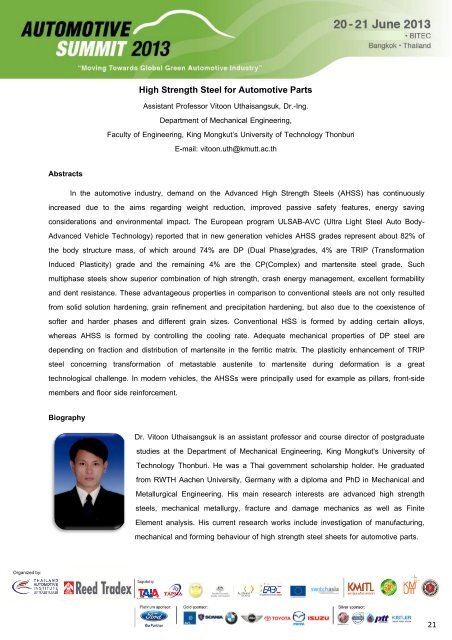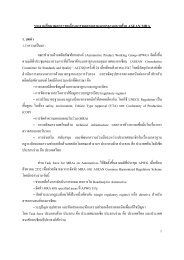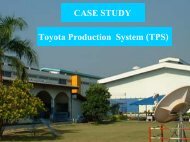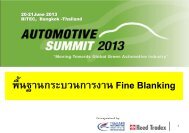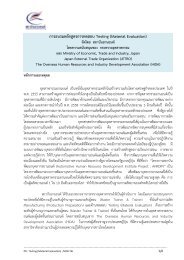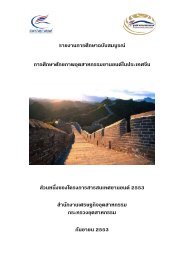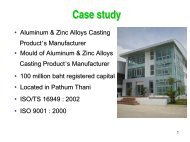Biography - Thailand Automotive Institute
Biography - Thailand Automotive Institute
Biography - Thailand Automotive Institute
Create successful ePaper yourself
Turn your PDF publications into a flip-book with our unique Google optimized e-Paper software.
Abstracts<br />
High Strength Steel for <strong>Automotive</strong> Parts<br />
Assistant Professor Vitoon Uthaisangsuk, Dr.-Ing.<br />
Department of Mechanical Engineering,<br />
Faculty of Engineering, King Mongkut’s University of Technology Thonburi<br />
E-mail: vitoon.uth@kmutt.ac.th<br />
In the automotive industry, demand on the Advanced High Strength Steels (AHSS) has continuously<br />
increased due to the aims regarding weight reduction, improved passive safety features, energy saving<br />
considerations and environmental impact. The European program ULSAB-AVC (Ultra Light Steel Auto Body-<br />
Advanced Vehicle Technology) reported that in new generation vehicles AHSS grades represent about 82% of<br />
the body structure mass, of which around 74% are DP (Dual Phase)grades, 4% are TRIP (Transformation<br />
Induced Plasticity) grade and the remaining 4% are the CP(Complex) and martensite steel grade. Such<br />
multiphase steels show superior combination of high strength, crash energy management, excellent formability<br />
and dent resistance. These advantageous properties in comparison to conventional steels are not only resulted<br />
from solid solution hardening, grain refinement and precipitation hardening, but also due to the coexistence of<br />
softer and harder phases and different grain sizes. Conventional HSS is formed by adding certain alloys,<br />
whereas AHSS is formed by controlling the cooling rate. Adequate mechanical properties of DP steel are<br />
depending on fraction and distribution of martensite in the ferritic matrix. The plasticity enhancement of TRIP<br />
steel concerning transformation of metastable austenite to martensite during deformation is a great<br />
technological challenge. In modern vehicles, the AHSSs were principally used for example as pillars, front-side<br />
members and floor side reinforcement.<br />
<strong>Biography</strong><br />
Dr. Vitoon Uthaisangsuk is an assistant professor and course director of postgraduate<br />
studies at the Department of Mechanical Engineering, King Mongkut's University of<br />
Technology Thonburi. He was a Thai government scholarship holder. He graduated<br />
from RWTH Aachen University, Germany with a diploma and PhD in Mechanical and<br />
Metallurgical Engineering. His main research interests are advanced high strength<br />
steels, mechanical metallurgy, fracture and damage mechanics as well as Finite<br />
Element analysis. His current research works include investigation of manufacturing,<br />
mechanical and forming behaviour of high strength steel sheets for automotive parts.<br />
Organized by:<br />
21


